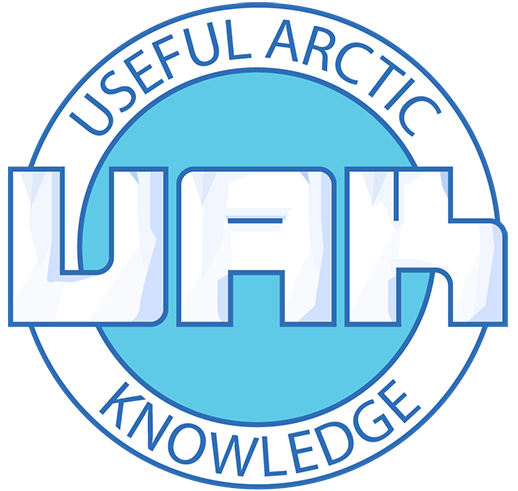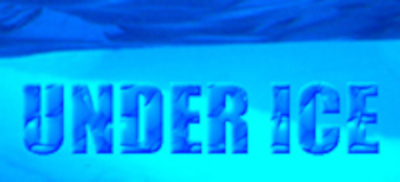GEOGRAPHIC REGION > ARCTIC
Type of resources
Available actions
Topics
Keywords
Contact for the resource
Provided by
Formats
Update frequencies
status
-

WIFAR/UNDER-ICE acoustic recording from an integrated ice station in the Fram Strait marginal ice zone in 2012.
-

Ambient sound was measured in Storfjorden, Svalbard at frequencies from 30 to 24000 Hz at a depth of around 20 meters. The measurements were carried out in open sea at depths of about 100 metres or more. The measurements were carried out using a drifting small boat, where the engine was turned off. Thereafter, a second small boat was used for transmitting pings at 11 kHz towards the first small boat at different depths and ranges. The experiment was carried out in June 2020 by Master students under supervision, as part of a research school in the Barents Sea with K/V Svalbard, organized under the UAK project lead by the Nansen Environmental and Remote Sensing Centre.
-

Three GPS trackers were deployed on sea ice in the Fram Strait between 7th and 8th July 2016, collecting GPS data until 10th September 2016 with an interval between 5 and 30 min.
-

Ambient sound was measured in Storfjorden, Svalbard at frequencies from 30 to 24000 Hz at depths from 4 to 20 meters. The measurements were carried out near land and melting ice bergs. The measurements were carried out using a drifting small boat, where the engine was turned off. Thereafter, a second small boat was used for transmitting pings at 11 kHz towards the first small boat at different depths and ranges. The experiment was carried out in June 2020 by Master students under supervision, as part of a research school in the Barents Sea with K/V Svalbard, organized under the UAK project lead by the Nansen Environmental and Remote Sensing Centre.
-

Ambient sound was measured in Storfjorden, Svalbard at frequencies from 30 to 24000 Hz at a depth of around 20 meters. The measurements were carried out in open sea at depths of about 100 metres or more. The measurements were carried out using a drifting small boat, where the engine was turned off. Thereafter, a second small boat was used for transmitting pings at 11 kHz towards the first small boat at different depths and ranges. The experiment was carried out in June 2020 by Master students under supervision, as part of a research school in the Barents Sea with K/V Svalbard, organized under the UAK project lead by the Nansen Environmental and Remote Sensing Centre.
-

Time averaged sound pressure obtained from the ACOBAR acoustic experiment in Fram Strait. The data were were obtained over 362 days every 3 hours from Aug 2010 - Jul 2011, and over 311 days every 3 hours from Sep 2011 - Jul 2012. 10-, 50- and 90- percentiles of the sound pressure and power for each frequency (0-500 Hz) were computed.
-

Ambient sound was measured in Storfjorden, Svalbard at frequencies from 30 to 24000 Hz at a depth of around 20 meters. The measurements were carried out in open sea at depths of about 100 metres or more. The measurements were carried out using a drifting small boat, where the engine was turned off. Thereafter, a second small boat was used for transmitting pings at 11 kHz towards the first small boat at different depths and ranges. The experiment was carried out in June 2020 by Master students under supervision, as part of a research school in the Barents Sea with K/V Svalbard, organized under the UAK project lead by the Nansen Environmental and Remote Sensing Centre.
-

XBT profiles of temperature, pressure and sound speed in the Fram Strait from KV Svalbard in September 2010. There are a total of 41 profiles and 71422 observations. Two different XBT probes were used: T5 and T7, see http://www.sippican.com/contentmgr/showdetails.php/id/312 for more info on the probes.
-

XBT profiles of temperature, pressure and XCTD profiles of temperature, pressure, salinity were collected in the Fram Strait from KV Svalbard in September 2014. The data collection also include calculated sound speed profiles provided by the instrument manufacturer. There are a total of 44 profiles and 231149 observations.
-

XBT profiles of temperature, pressure and sound speed in the Fram Strait from KV Svalbard in September 2012. There are a total of 7 profiles and 11365 observations. The XBT probe T5 was used, see http://www.sippican.com/contentmgr/showdetails.php/id/312 for more info on the probe.
 NERSC GeoNetwork catalogue
NERSC GeoNetwork catalogue